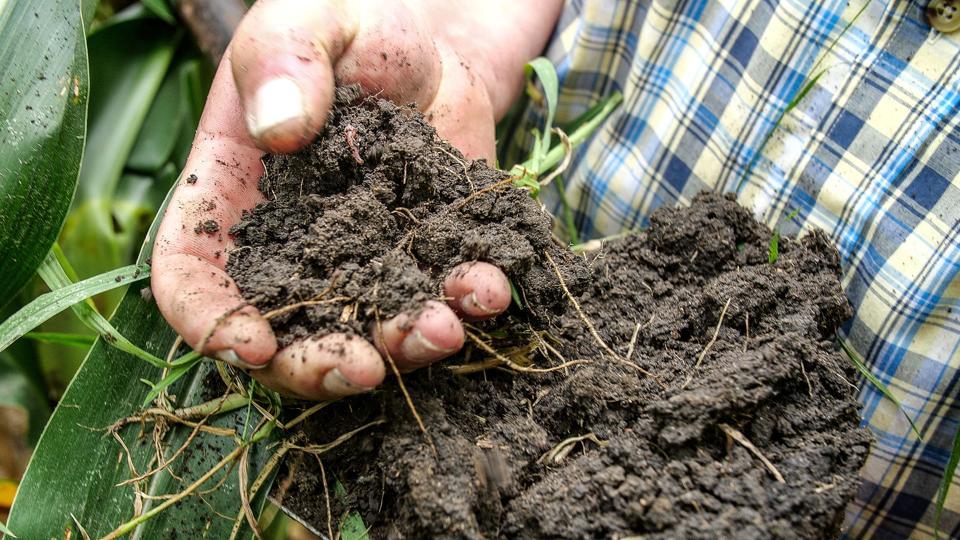
It should come as no surprise that healthy soil is essential for producing wholesome food since it forms the foundation of food systems. This is in line with World Soil Day (WSD), which will be marked on December 5 in 2022.
Theme of the World soil day
With “Soils: Where food begins” as its overarching theme, WSD 2022 aims to increase public awareness of the value of preserving healthy ecosystems, soils, and human well-being by addressing the rising challenges in soil management, motivating societies to enhance soil health, and promoting the sustainable management of soil.
Soil
The loose earthen surface material known as soil is where terrestrial plants are grown. Usually, it is made of regolith or weathered rock that has undergone chemical, physical, and biological processes.
Importance of soil
- Healthy soils are essential for our survival: They support healthy plant growth, habitat for many insects and other organisms, It enhance both our nutrition and water percolation to maintain groundwater levels, act as a filtration system for surface water.
- Second largest carbon sink after ocean: Soils help to regulate the planet’s climate by storing carbon and are the second largest carbon sink after the oceans. They help maintain a landscape that is more resilient to the impacts of droughts and floods.
- Contribute to the economies: They support our cities’ infrastructure, including roads, buildings, and buildings. For instance, the coastal plains of Kerala and the rich, deep fertile soils of the Ganga plain, particularly its delta, support a large density of population through prosperous agriculture.
Consequences of Soil degradation
- Primary contributors to soil degradation include industrial processes, mining, waste management, agriculture, the extraction and processing of fossil fuels, and emissions from transportation. In addition, irrigation with tainted effluent and excessive fertiliser and pesticide use can pollute the land.
- Causes of the nutritional depletion include: The burning of crop leftovers, soil erosion, runoff, and leaching are some of the causes of soil nutrient loss.
- Food security is being threatened by rising soil contamination as a result of nutrient loss and pollution, which globally threatens soil health and nutrition.
- About 29% of India’s total land area is affected by soil degradation. Approximately 29% of India’s total geographical area is impacted by soil degradation in one way or another. In turn, this endangers agricultural productivity, the preservation of in-situ biodiversity, the quality of the water supply, and the socioeconomic well-being of communities that depend on the land. The soil on around 3.7 million hectares loses nutrients (depletion of soil organic matter, or SOM).
- Consequences that are beyond repair: The effects of soil degradation are extensive and may have permanent effects on ecosystem and human health.
India’s Soil conservation strategy
- Five-pronged approach: The Indian government is putting its five-pronged approach to soil conservation into practise. This entails removing chemicals from the soil, preserving its biodiversity, improving SOM, preserving soil moisture, reducing soil degradation, and stopping soil erosion.
- Program for Soil Health Cards (SHC): Before, farmers lacked knowledge about the type of soil, soil deficiencies, and soil moisture content. In order to address these problems, the Indian government introduced the Soil Health Card (SHC) programme in 2015. The SHC is used to determine changes in soil health over time and to evaluate the current state of soil health. The SHC shows indicators of soil health and the descriptive terms that go along with them, assisting farmers in applying the appropriate soil amendments.
- Pradhan Mantri Krishi Sinchayee Yojana: Another important initiative is the Pradhan Mantri Krishi Sinchayee Yojana, which aims to stop soil erosion and promote rainwater collection, natural vegetation regeneration, and groundwater recharge.
- Promote traditional indigenous practises like organic farming and natural farming through the National Mission for Sustainable Agriculture (NMSA): NMSA also has programmes that support these practices, which reduce reliance on chemicals and other agri-inputs and ease financial burden on smallholder farmers.
- Initiatives taken by the FAO to assist national efforts to conserve soil In order to help the Government of India’s efforts in soil conservation and the development of sustainable agrifood systems, the Food and Agriculture Organization of the United Nations (FAO) engages in a number of programmes.
- Collaboration between FAO and developers of forecasting and data analytics tools: In order to help vulnerable farmers make informed crop selection decisions, particularly in rainfed areas, the FAO is working with the National Rainfed Area Authority and the Ministry of Agriculture and Farmers’ Welfare (MoA&FW) to develop forecasting tools using data analytics.
Way forward
- In order to identify, manage, and restore degraded soils and implement preventative measures, there is a need to improve communication between academia, policymakers, and society.
- These will make it easier for timely, fact-based information to reach all pertinent parties.
- Greater collaboration and partnerships are essential to ensuring knowledge is accessible, best practises are shared, and everyone has access to clean, sustainable technologies, leaving no one behind.
Conclusion
Healthy soil is essential for sustained food production because roughly 95% of the world’s food production depends on it. A key obstacle to producing food sustainably is the terrible status of the soil health today. Unprecedented soil deterioration. By 2030, India will have restored 26 million hectares of degraded land.
